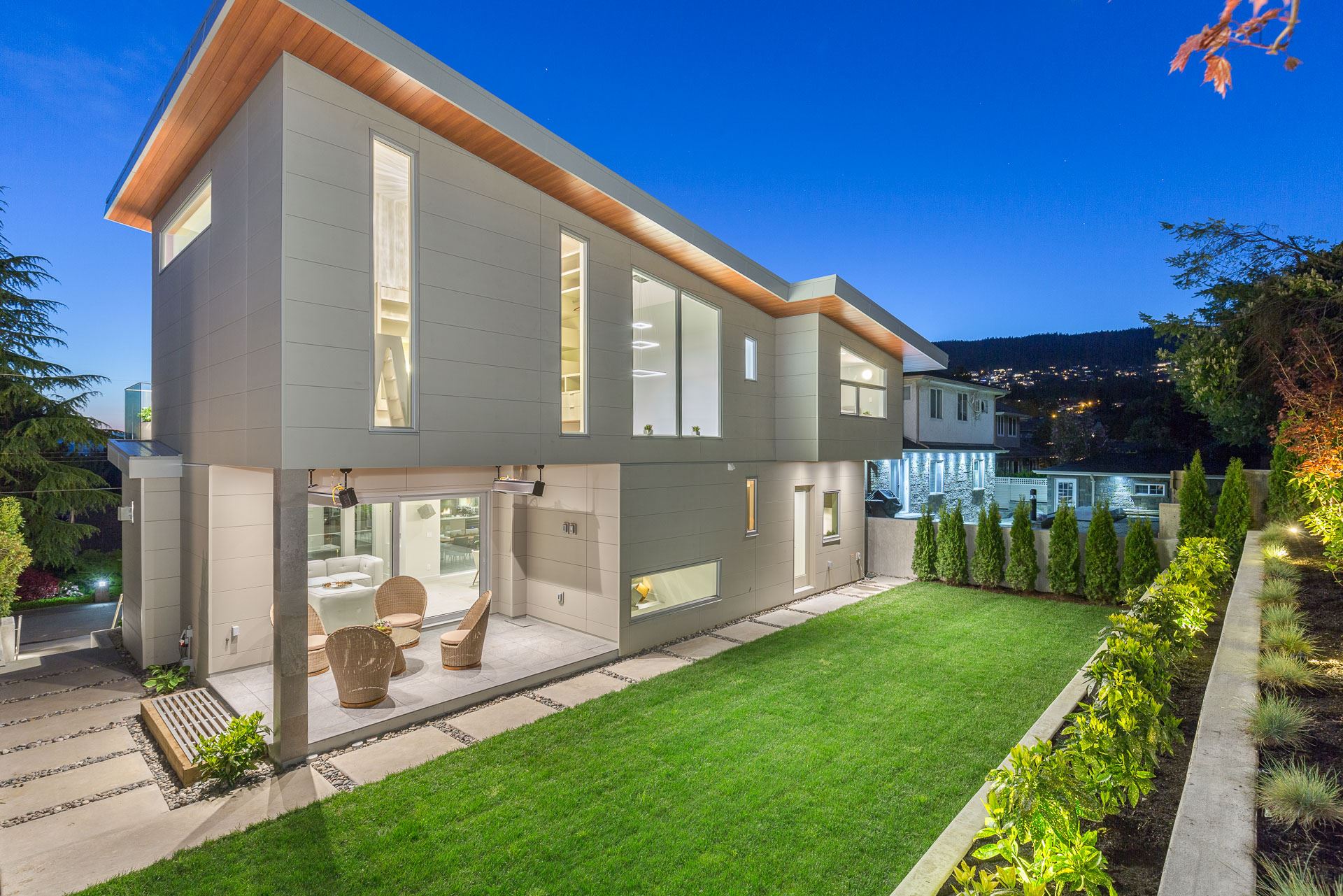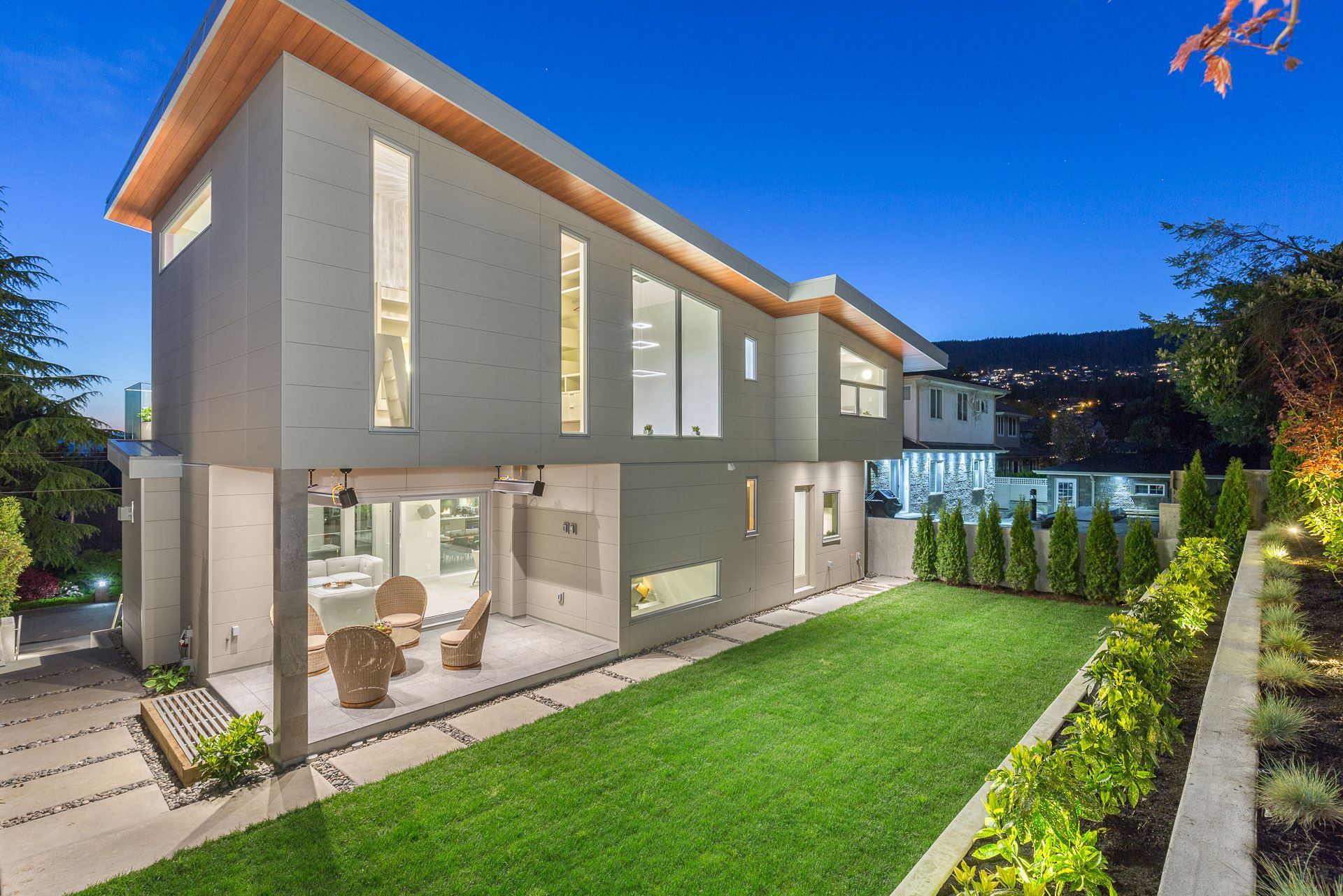
When choosing exterior siding for a residential project, residential builders and homeowners often hyperfocus on things like aesthetics, texture and durability. While those things are important, many forget about or overlook fire resistance.
Wildfires are on the rise in many parts of North America; therefore, the risk of fire damage is top of mind for many homeowners. That’s why choosing fire-resistant siding should be a primary factor when purchasing a new home exterior. It's important to understand the benefits and risks associated with each exterior material, whether you're leaning toward fiber cement siding, vinyl siding or traditional wood siding. It is possible to find a product that completes your design vision, stays looking good for generations and protects your home against wildfires and other potential fire damage.
Options like fiber cement siding come in a variety of innovative and modern textures, profiles, finishes and styles. They provide an abundance of design flexibility and are low maintenance while simultaneously meeting fire code compliance standards. Fire resistance is not futile, and fiber cement siding panels can improve the overall fire resistance hardening rating of your home.

Among the many challenges faced by residential building designers — on top of creating new and unique building designs — is fire code compliance.
Builders and homeowners have to consider many factors: construction type(s), fire separation distances, required hourly ratings, sheathings, air and water barriers, interior finishes, exterior finishes, ever-evolving energy codes and more.
Building product manufacturers can make things easier by fully vetting product offerings and transparently offering performance data on product testing, so finding the right manufacturer is key. We at Nichiha know our products best, and we are completely transparent about the testing standards our products meet to ensure the utmost safety. We realize one of the last things any homeowner wants to worry about is the high heat tolerance of their house siding, which is why we strive to provide our customers with peace of mind.
The challenge with fire resistance and fire safety is all the codes and standards that need to be met. When it comes to the International Building Code (IBC) that pertains to exterior wall claddings and interior wall coverings, there are three standards that provide the most useful data about how building products respond to fire and can help architects design with confidence: ASTM E 84, ASTM E 119 and NFPA 285.

This test standard measures both flame spread and smoke development. The standard consists of measures of flame propagation over a test sample surface over time, and the smoke-developed index represents the amount of smoke generated by the test sample versus time. It is referenced in the International Building Code over 30 times.
The test apparatus itself is 25 feet in length, and the tested material must run 24 feet (by 20 inches wide) within the test tunnel. Windows built into the apparatus allow the testing operator to track the progress of the flame spread when the sample is exposed to controlled airflow and, of course, a direct flame that comes from gas burners at one end of the testing chamber.
The building product samples are tested in a ‘ceiling’ position, with the room darkened. The operator notes how far the test sample carries the flame down the chamber during a maximum ten-minute period. The density of the smoke is tracked using a photometer system that is mounted in the vent pipe at the end of the chamber.
This standard is applicable to both exterior and interior building materials. If you look at the code, specific performance requirements need to be met for certain materials, such as foam plastics, and the entire classification system can be searched in Section 803: Interior Wall and Ceiling Finishes.
Material with a Class A fire rating in accordance with E84 data must have a flame spread index between 0 and 25, with a smoke-developed index ranging from 0 to 450.
A Class B rated material must have a flame spread between 26 and 75, with a smoke-developed index still capped at 450.
A Class C rated material will have a flame spread between 75 and 200, with a smoke-developed index still capped at 450.

How Nichiha Products Enhance Building Resiliency
Download our informative white paper to learn how you can enhance your next project through the use of Nichiha cladding products.
Entitled, Standard Test Methods for Fire Tests of Building Construction and Materials, ASTM E 119 is another fundamental standard for fire resistance with 27 references in the International Building Code. Introduced in Section 703, the tests are used in code to establish the fire-resistance rating of building materials and assemblies.
The IBC defines fire-resistance as ‘the period of time a building element, component or assembly maintains the ability to confine a fire, continues to perform a given structural function or both.’ This standard provides required hourly ratings for structural frames, bearing interior and exterior walls, nonbearing interior and exterior walls, partitions, floors and roofs.
The ASTM E 119 standard is incredibly complex, intended to test building components and assemblies in a manner representative of their actual use in the built environment. Thus, the test incorporates various approaches and procedures for evaluating loadbearing walls and partitions, non-loadbearing walls and partitions, loaded columns, floors, roofs, etc.
With each material, the size and dimensions of the specimens are specified within the procedures. For wall portions specifically, the size of the specimen for tests of load-bearing and non-loadbearing walls is greater than 100 square feet.
To run the test sample, test specimens are exposed to a controlled, standard fire at specific temperatures throughout a pre-set period of time. For walls, the test measures the transmission of heat, transmission of hot gasses through the specimen, and, when the load-bearing is included, ‘the load-carrying ability of the test specimen during the test exposure.’
To ensure consistent results and prevent variations in such things as moisture content, the test specimens-to-be are protected and conditioned prior to testing. The test fire is controlled according to a standard time-temperature curve:
To record specimen temperatures every 30 seconds or less, at least nine thermocouples measure the furnace temperatures and nine more are placed strategically on unexposed surfaces of the wall specimens.
For tests of one hour or more, a hose stream test may be conducted at the conclusion of the fire exposure to subject the sample to the water’s impact, erosion and cooling effects. For each specimen type, conditions of acceptance (i.e. passing results) are listed out.
NFPA 285 is the Standard Fire Test Method for Evaluation of Fire Propagation Characteristics of Exterior Wall Assemblies Containing Combustible Components, and it garners most of the attention when it comes to fire standards.
NFPA 285 is used in the code to allow for the use of combustible materials in non-combustible construction and is vital to the implementation of the energy code because it enables the use of foam plastic insulation in or on exterior wall assemblies.
As an assembly test, a two-story test structure with a 78” x 30” window opening at the burn room is used to test vertical and lateral fire propagation for a particular combination of assembly components. The obvious goal of this test is to see if the material can prevent a fire that has broken out in one room from escaping out the window and spreading.
A wall assembly will meet the NFPA 285 standard if:

Nichiha’s panels have a flame spread index of 0 and a smoke-developed index of 0 when tested against ASTM E-84 standards, and per IBC 2015, Chapter 8, Section 803.1, Nichiha’s Architectural Wall Panels (AWP) are a Class A finish material.
When tested against ASTM E-119 standards, a Nichiha protected wall successfully endured a 60-minute fire exposure without developing excessive unexposed surface temperatures or allowing flaming on the unexposed side of the siding assembly. When a hose stream test was done, it did not penetrate the interior sheathing and stood protected.
Nichiha’s AWPs are tested in accordance with NFPA 285 standards, and the wall assembly meets every acceptable criterion to be a top-rated, fire-resistant material.
Finding fully flame retardant, noncombustible materials may not be realistic; however, there are great fire-resistant options that allow you to rest easy knowing your home is protected. While fire resistance won’t make your home fireproof, a fire-rated exterior siding will help protect the building and your possessions until the fire department can arrive on the scene, potentially limiting damage and keeping you safer.
If you’re ready to make fire resistance and durability a project priority, Nichiha’s Architectural Wall Panels, with their 15-year warranty, are game-changers. For more information on fire safety, visit the Nichiha website.